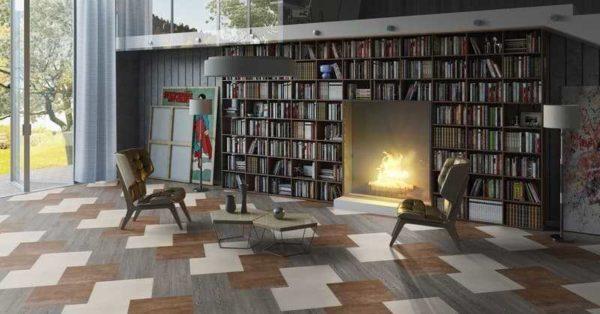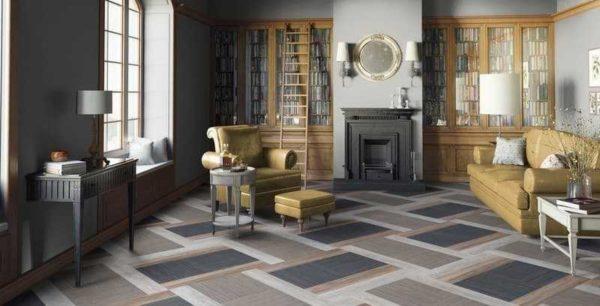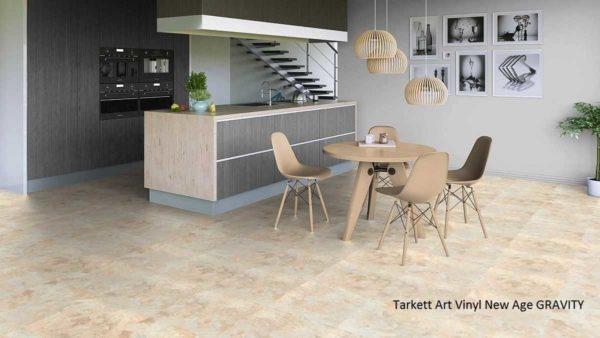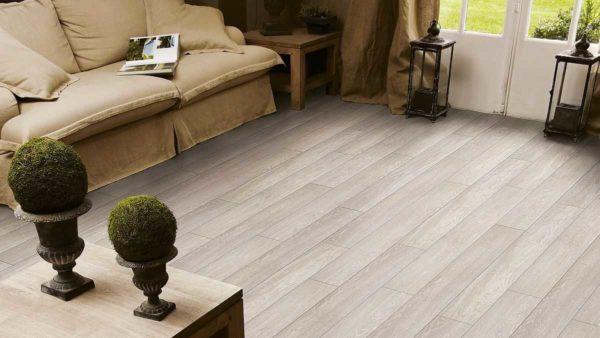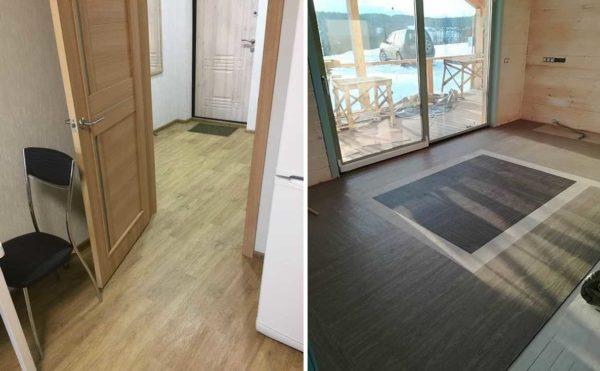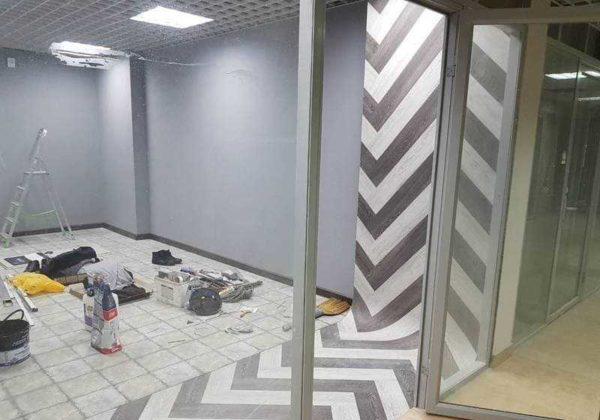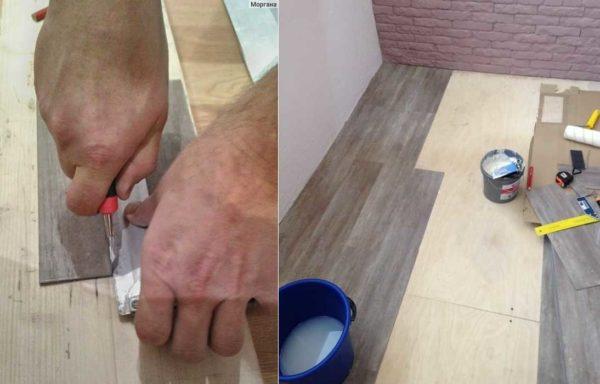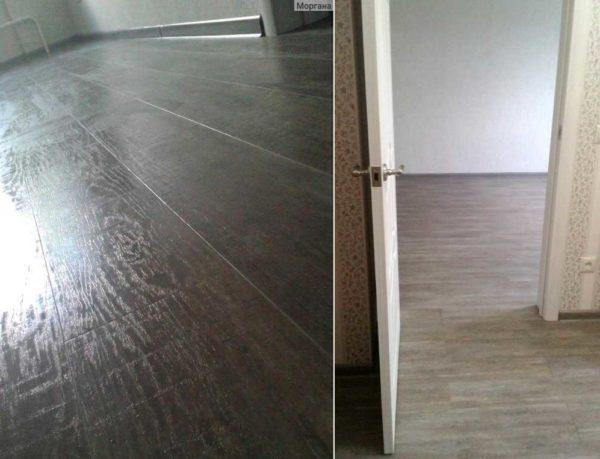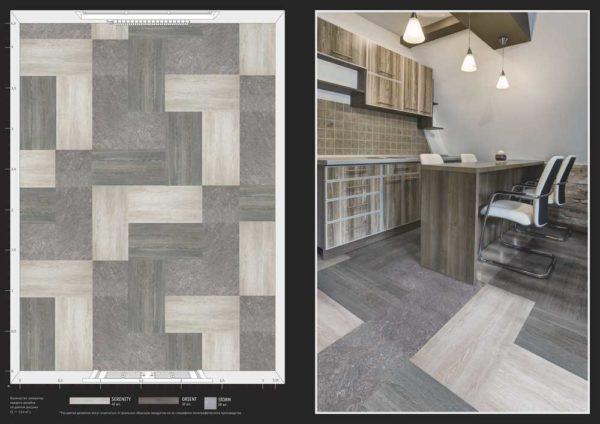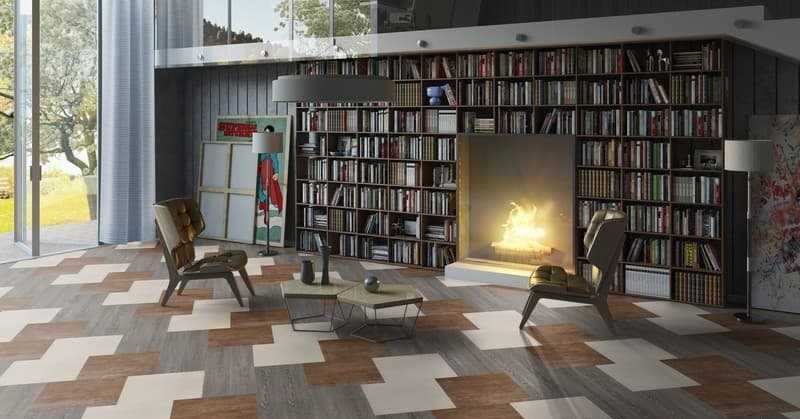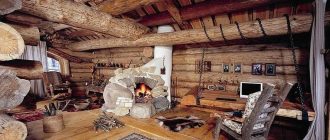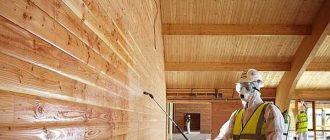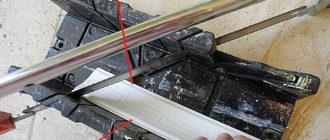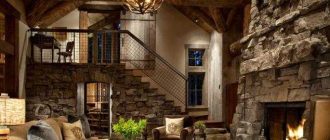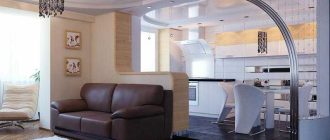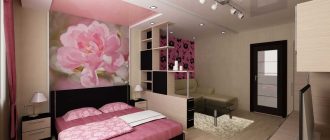Vinyl modular flooring is considered one of the most practical and durable floor coverings that have emerged in recent years. It may look like parquet, but it does not squeak, is not afraid of water and does not need to be scraped or renewed. It can look like stone but not be cold and droning. One of the most popular brands of this flooring is Art Vinyl Tarkett. It was this company that was the first to promote this material in the Russian market. It took only a little more than six years, and this coating has clear fans.
Contents of the article
What is the floor covering Art Vinyl Tarkett
Vinyl tiles are loved by designers – there are many types of coating, many of them can be combined, which gives additional freedom for creativity. This floor covering is loved by builders – it can be laid quickly and easily. The same material is loved by housewives – not only does it look great, it is easy to clean. But, as usual, everything depends on the quality.
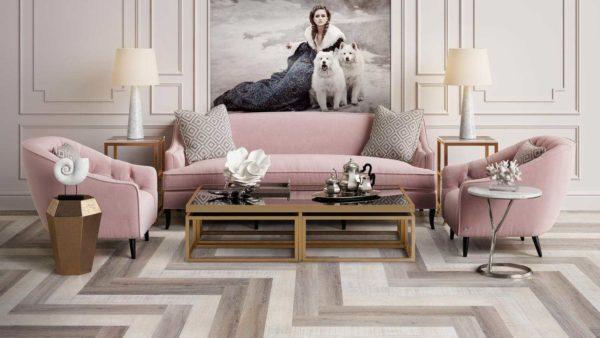
One of the options with stable quality – Art Vinyl Tarkett. This is a vinyl floor covering, which is available in the form of tiles (squares) and slats (rectangles). Some people consider this coating only a kind of linoleum, but this is not true: the composition is different, other materials are used. Not only that, there are differences in feel – not shiny, not sticky.
Collections from each other can differ in the thickness of layers, as they have different purposes. But the sequence of layers itself remains the same.
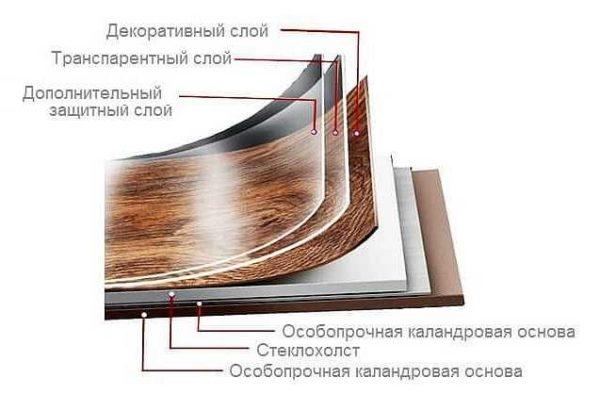
Composition and purpose of the layers:
- Substrate. A special grade of vinyl, which at high strength has a high degree of flexibility. The thickness of the substrate varies depending on the class of flooring. Thicker base has higher thermal insulation properties, better sound insulation, higher wear resistance.
- Glass fleece. Not present in all series. Gives greater dimensional stability (less thermal expansion).
- Decorative layer. Responsible for the appearance of the coating. Tarkett Art Vinyl not only imitates natural materials by coloring, it also copies the texture.
- Protective layers. Most often there are two of them – vinyl and polyurethane. This combination allows you to achieve high wear resistance. Even with a small thickness of the coating, the protective layer has a high resistance to abrasion and mechanical damage (heels do not squeeze through).
The main and main difference of Art Vinyl is in the large number of variants. It’s not just about colors and textures, but the fact that this coating can be combined, creating patterns and compositions. There are ready-made laying schemes, but you can create them individually.
Classification and varieties
If we talk about the methods of laying, there are two modifications – with locks (glue is not necessary) and which are laid on glue. Art Vinyl Tarkett with locks is laid quickly. The locks are covered with glue, protected by a special tape. When laying the tape is removed, the glue fixes the next fragment. The result is a continuous waterproof coating. The disadvantage of this option is the impossibility of replacing one element. All fragments are connected to each other, which makes this event extremely difficult.
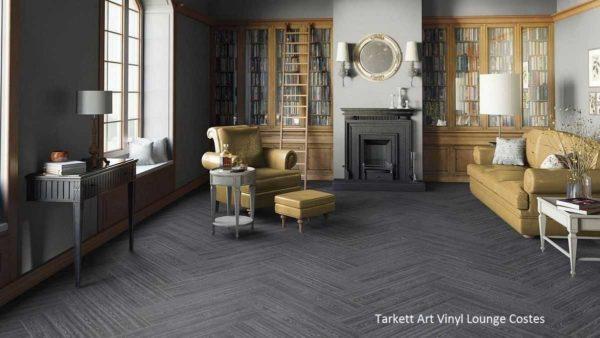
Tarkett Art Vinyl adhesive collections are glued using an adhesive that is compatible with PVC and the material your floor is made of. The disadvantage of this option is that gaps can appear between the tiles due to thermal expansion. Well, and it takes longer to install.
On wear resistance Art Vinyl Tarkett is divided into three classes – for residential (domestic), commercial and industrial premises. The second type has greater abrasion resistance (thicker protective layer). If desired, it can be laid at home – in rooms with high traffic. Usually these are corridors, hallways, kitchens. Art Vinyl household purpose in commercial premises is better not to use: it will quickly rub off. Industrial is the most wear-resistant. It can withstand the movement of machines, but its cost is high. Its use in domestic premises is irrational.
Collections of Art Vinyl by Tarkett
To date, Tarkett produces eight collections of Art Vinyl:
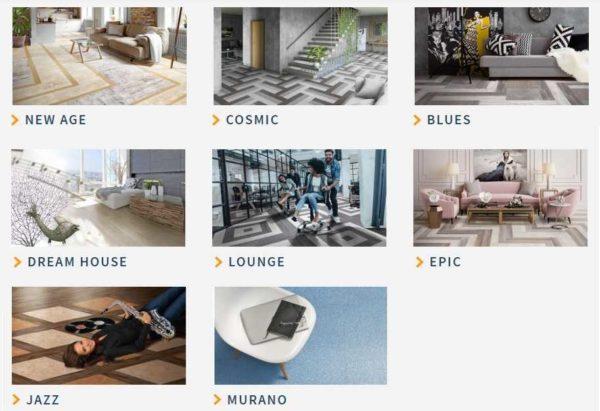
- New Age (metallic effect);
- Cosmic (metallic effect);
- Blues (stone imitation, there are monochrome ones);
- Dream House (wood of different species);
- Lounge (high wear resistance, wood imitation);
- Epic (vintage wood);
- Jazz (imitation parquet);
- Murano (high wear resistance, stone imitation).
Each is available in several formats. Most of them are rectangular slats, but there are also square slats. And the long slats can be of different widths:
Square tiles usually come with a side of 457 mm. And each kind is with locks, there are under the sticker.
Any of the collections has several dozen variants of designs and colors. So the choice is really great.
Technical characteristics
From the technical characteristics, questions may arise on the class of application of the floor covering. It is displayed in numbers. The first digit indicates the area of application by type of premises: 2 – household class, 3 – office and commercial premises, 4 – industrial. The second digit reflects the intensity of use:
- 1 – low;
- 2 – medium;
- 3 – high;
- 4 – very high.
For domestic premises, the maximum intensity of use is 3. It is more than enough for any room in an apartment or house. Even with the second class can be used everywhere.

Floor covering Art Vinyl Tarkett has a high resistance to abrasion, if we talk about the use in houses and apartments, all collections have a class of use 23, which in this area – the maximum.
| Name | Application class residential/commercial |
Thickness | Working layer | Resistance to feet and heels | Roller chair resistance | Format | Designs and colors | Laying method |
|---|---|---|---|---|---|---|---|---|
| ART VINYL NEW AGE | 23/32 | 2,1 mm | 0.4 mm | high | without damage | plank, tile | 21 | on adhesive |
| ART VINYL COSMIC | 23/34 | 3,0 mm | 0.7 mm | high | without damage | lath | 10 | chamfered |
| ART VINYL Blues | 23/34 | 3.0 mm | 0.7 mm | high | without damage | plank, tile | 13 | on glue |
| ART VINYL Dream house | 23/31 | 4.0 mm | 0.3 mm | high | without damage/abrasion resistance 75 | bar | 12 | locks |
| ART VINYL LOUNGE | 23/34 | 3.0 mm | 0.7 mm | high | without damage | plank, tile | 27 | on adhesive |
| ART VINYL EPIC | 23/33 | 2,7 mm | 0.55 mm | no data | no data | bar | 10 | adhesive |
| ART VINYL JAZZ | 23/32 | 2,1 mm | 0.4 mm | high | without damage | lath | 10 | adhesive |
| ART VINYL MURANO | 23/34 | 3,0 mm | 0.7 mm | high | without damage | tile | 9 | on adhesive |
Substrate requirements and leveling methods
Art Vinyl requires an absolutely level substrate. “Absolutely level” – that is, which when checked with a two-meter rule has a deviation of no more than 2 mm on these 2 meters. And the “difference” should be smooth. Any, even the smallest, obvious pits and protrusions should be removed/plastered.
There are two ways of leveling the floor, which the manufacturer accepts – concrete screed or plywood on the lags. Plywood can be placed on a rough floor or old subfloor, but the floor must be free of drops. When using plywood, leave a gap of 5 mm between the wall and the sheet around the perimeter of the room. Sheets are laid in a split (so that the seams do not coincide), between neighboring sheets to leave a gap of 2-3 mm. Fasten with self-tapping screws with a flat head. Under them pre-drill holes with a diameter larger than the diameter of the cap. Field of laying, flats and seams should be putty. After the putty dries, level it with sandpaper. This is the manufacturer’s recommendation.
Based on experience, the seams between the sheets of plywood, it is desirable to pass the sealant, which after drying does not lose elasticity. This will better compensate for temperature and moisture expansion. This is especially important for houses that are heated only periodically.
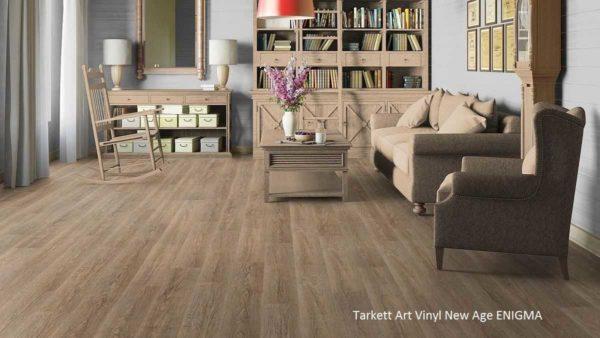
To level the floor under Art Vinyl Tarkett with a screed, any finishing or self-leveling mixtures are suitable. They can be based on cement, gypsum, any polymer. Laying is possible only after complete drying. If the base has high humidity (above 8-10%), waves and bloating may form.
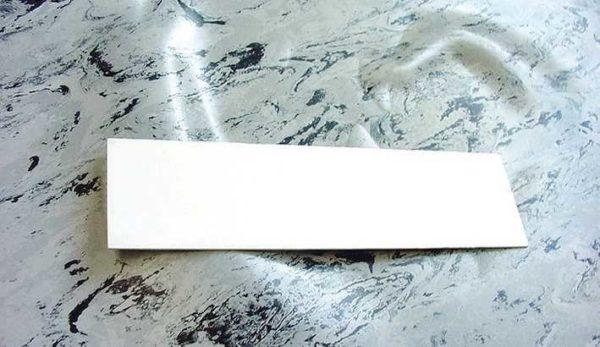
Regardless of the type of subfloor, it must be absolutely flat, dry and clean. Even a grain of sand can be visible. Therefore, before laying, make a thorough cleaning. It also does not hurt to clean the place of work with a vacuum cleaner during the process.
Adhesive for Art Vinyl Tarkett
Glue for laying Tarkett Art Vinyl choose depending on the substrate. It is important that it is compatible with PVC and your substrate. Be sure to read the instructions before purchasing. Tarkett recommends acrylic water-dispersion adhesive. It does not have a strong odor and can be used indoors. Solvent-based glue should not be used. Manufacturer’s recommended brands of adhesive for laying Art Vinyl flooring:
The following types of adhesive are also used (according to the reviews of those who have already laid Art Vinyl):
- Kiilto 2 plus
- Ceresit K188E
- Bostik KE320
Of the above brands, it is more convenient to work with Ceresit. It is more homogeneous, better distributed and at the same time does not spread. It is not bad to work with Bostik, it is cheaper, but it is a little more difficult to work – less “life span”. Consumption of the adhesive is specified in its instructions, it also depends on the absorbency of the base. To reduce consumption, you can apply a primer compatible with the adhesive composition (it is prescribed in the instructions, but you can dilute the glue with water in the proportion of 1/1 and roll the screed).
Laying Art Vinyl
With the laying of the locking variety of Art Vinil Tarkett (New Age) there are no problems. Each fragment has a spike and groove, which have no problem clashing with each other. The second tile is lifted up, the edge is inserted into the groove of the already lying tile, and then the fragment is lowered to the floor. No effort is required. Check whether the tiles are connected normally by running the palm of the hand over the joint.
Art Vinyl flooring should be installed at a temperature not lower than +15°C, but it is more convenient to work if the temperature is about +20°C. At this temperature, the tiles/planks are elastic and easier to work with. If the flooring is laid on a heated floor, the heating should be turned off 3-4 days before the start of work. After delivery, stacks of material are laid out on a flat clean surface and left to “acclimatize” for at least 48 hours. If the material was delivered during frost, the time is increased.
Another important point: curtain the windows in the room. So that sunlight does not create a temperature difference on the floor. It is not allowed to lay on a wet base.
Tools and materials
To lay the Art Vinyl Tarkett flooring, the following tools are needed:
- serrated trowels for applying adhesive (if the material is adhesive);
- cork lapping board – for smoothing the flooring;
- rubber mallet – for leveling the joints;
- 50-70 cm wide metal roller – to remove air and ensure good adhesion to the substrate;
- knife – for trimming the coating to size/shape.
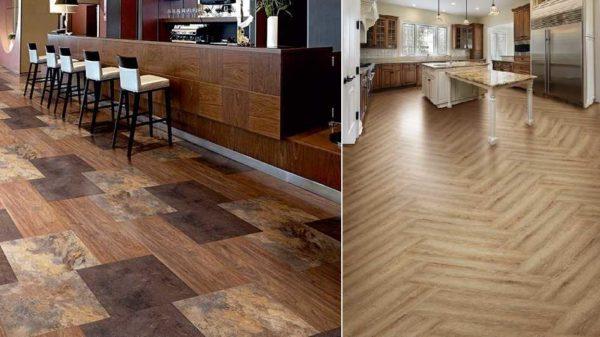
The adhesive is spread evenly over the surface with a toothed trowel.
The recommended trowels are specified in the technical description of the adhesive. For example, when using Ceresit K 188E Extra, it is recommended to use an A2 or A3 toothed trowel, depending on the structure of the back surface. For Forbo 528 Eurostar Allround, toothed trowel: A1/A2/B1/B2.
The adhesive consumption depends on the absorbency of the substrate (on cement screed without priming it will be more than on plywood). Also from experience, if you will lay the coating in more than one room, take a few trowels A1 and A2. They are quickly erased, especially if you lay Art Vinyl Tarket on a concrete screed.
Features of work
Note that the geometry of the slats/tiles is not ideal. The difference is not too great – 1-2 mm, but you can not ignore it. Before gluing, it is best to collect the entire row of tiles, trim to size the necessary fragments, then number them on the back side. Then you can apply glue and lay out the row.
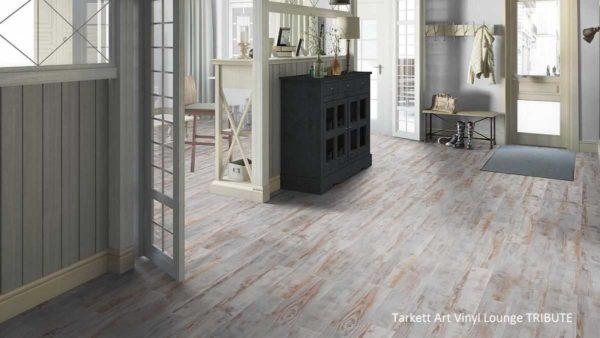
If the coating has a certain pattern, it is necessary to follow it. If you are assembling a flooring imitating parquet, make sure that the pattern of the adjacent fragments does not coincide. In order to avoid color spots, use planks/tiles from several stacks at once. This gives a better result. Before laying, wipe the back side of the tiles with a clean, dry rag to get rid of possible debris and dust.
When applying the adhesive it is necessary to make sure that there are no places where the adhesive has already dried and a new layer has been applied on top. The dried adhesive must be removed completely (with a metal trowel with an even sharp edge) and then a new layer must be applied. All places with a double layer of glue may then stand out. Work the laid out fragment with a metal rolling roller – to remove air that may get under the vinyl tile. After 20-30 minutes, roll again. After all the Art Vinyl Tarkett flooring is glued, wait until the glue dries completely (indicated on the package).
Floor covering Art Vinyl Tarkett in the interior
